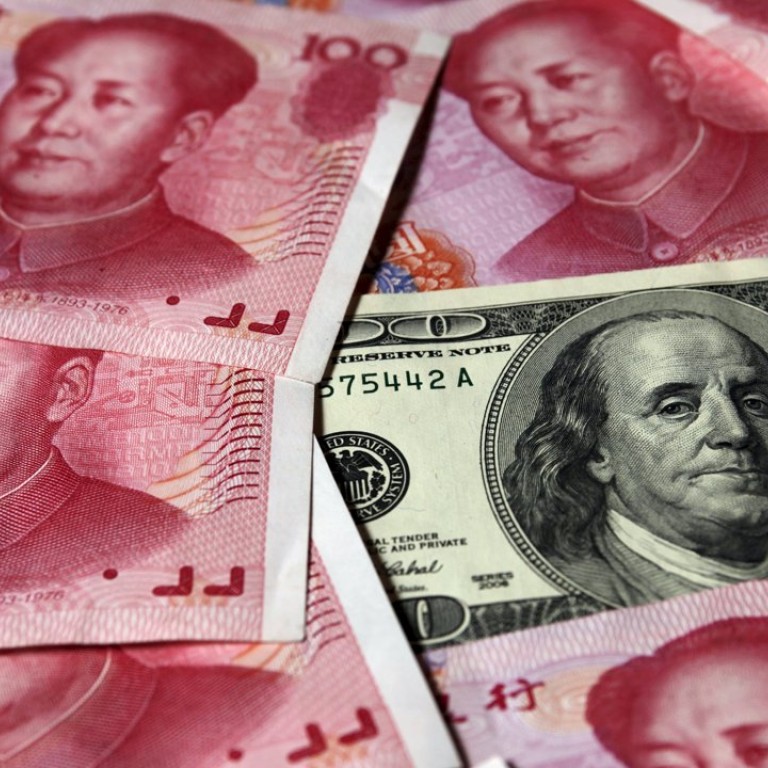
How the ‘great divorce’ between China and US will drive currency and rates markets
Don’t sleep on the prospect of more currency depreciation from the People's Bank of China, warns Bank of America Merrill Lynch, calling for a “great divorce” between the US and the world's second-largest economy in the coming year.
David Woo, head of global rates and currencies research, laid out the case for the team's favourite trade of 2016 – buy USDCNH six-month forwards – in his preview for the year ahead:
“On the eve of the December FOMC meeting, we think the question is not whether the US economy can live with higher interest rates and a higher US dollar. The question is, given the semi USD/RMB peg and China's increasing open capital account (which come at the expense of China's monetary independence), whether China can live with higher US interest rates and a higher US dollar. We are sceptical. This is why we think the USD/RMB peg, a marriage of convenience that has been the anchor for the global growth model for the better part of the last 15 years, is headed for a divorce, and we think the RMB devaluation on August 11 was a first small step in this direction.”
READ MORE: IMF decision to include yuan in its basket of reserve currencies will help accelerate economic reforms in China
The strategist doesn't think the motive for depreciation is to put Chinese exporters in a position to seize a larger share of global demand by improving their competitiveness. Rather, this is all about allowing the People's Bank of China enough room to enact easier monetary policy in the face of an economy whose growth is moderating.
“We believe the RMB will weaken further because, given the increased openness of China’s capital account, Beijing will not be able to lower interest rates and defend the RMB at the same time,” wrote Woo, reiterating his long-standing call.
Bank of America developed a monetary conditions index for China, which tracks the real effective exchange rate and real interest rates, and concludes that the policy has become too tight:
“We forecast USD/CNY to rise to 7, which would represent 9 per cent depreciation from the current level, compared with 3 per cent depreciation implied by the forwards right now,” wrote Woo. “We could see renewed decline of the RMB as early as the first quarter, as the combination of the inclusion of the RMB in the SDR and a December Fed hike (both of which are our central scenario) could turn out to be a perfect storm for the RMB.”
READ MORE: Fresh bout of depreciation awaits yuan after IMF review
The surprise depreciation in August was an attempt to reduce the extent to which the People's Bank of China was forced to intervene in currency markets to prop up the value of the currency – a process which drained domestic liquidity.
However, the market panic that ensued exacerbated the flow of funds out of the country, as investors and companies began to worry about the potential for subsequent devaluations that would erode the value of their yuan-denominated assets and raise the cost of servicing US dollar-denominated debt.

Woo acknowledges that the consensus view on Wall Street has shifted away from the notion that another large-scale devaluation is imminent and towards the idea that the People's Bank of China was “one-and-done”, in part because of the magnitude of the reaction to August's move.
Barclays, for instance, recently pushed back its call for further declines in the yuan.
“We acknowledge the strong resolve of the authorities to deter speculation and to maintain currency stability in the near term,” wrote Jose Wynne, head of FX research.
Like Woo, however, Barclays' strategists recommend being long USDCNH forwards to capitalise on any additional weakness in the Chinese currency.
The strategist believes once China's quest to have its currency included in the International Monetary Fund's special drawing rights basket has concluded – whether it ends in success or failure – the authorities in Beijing will lose their desire to backstop the yuan.

